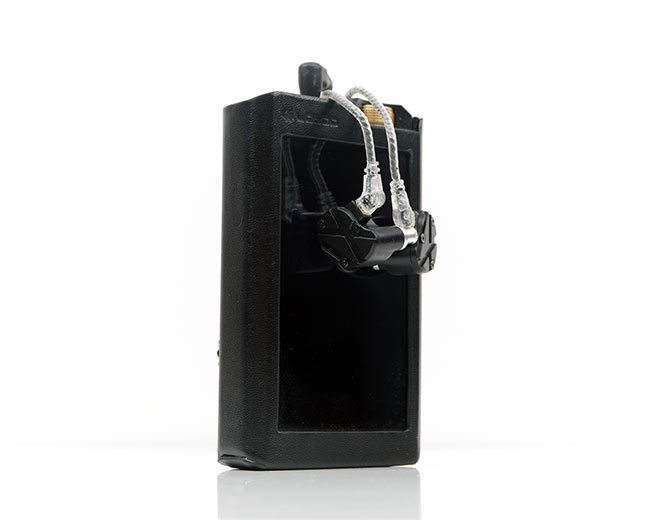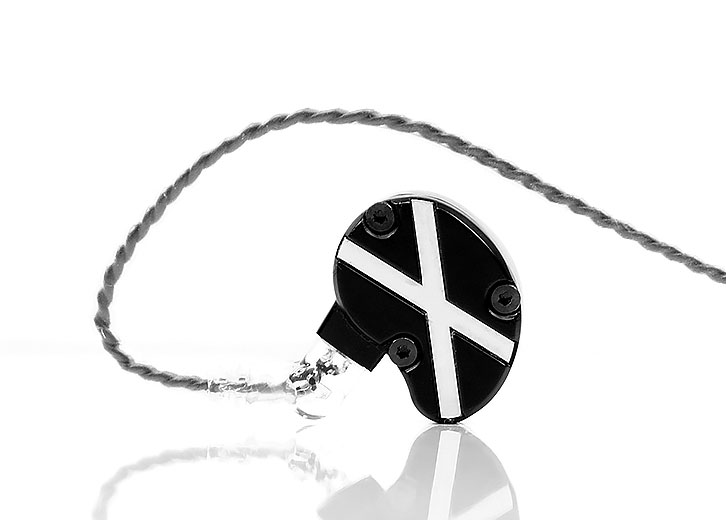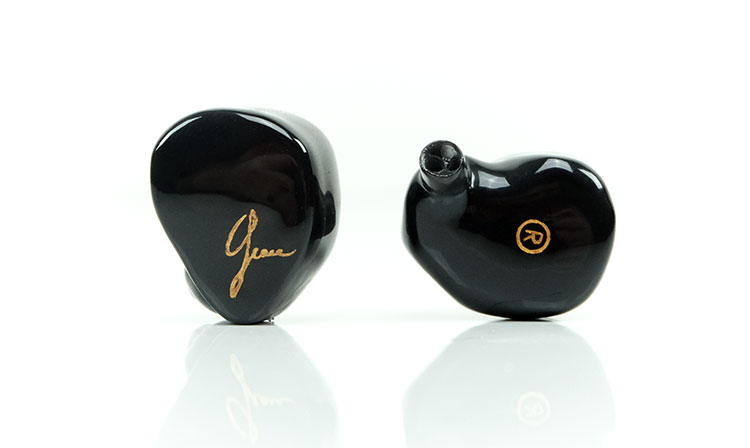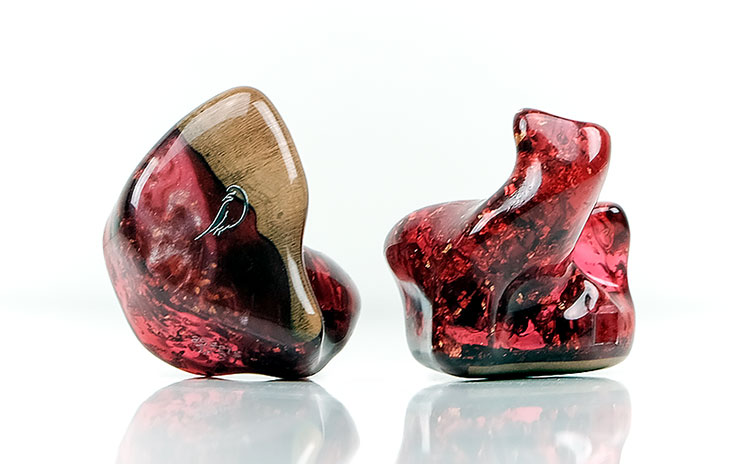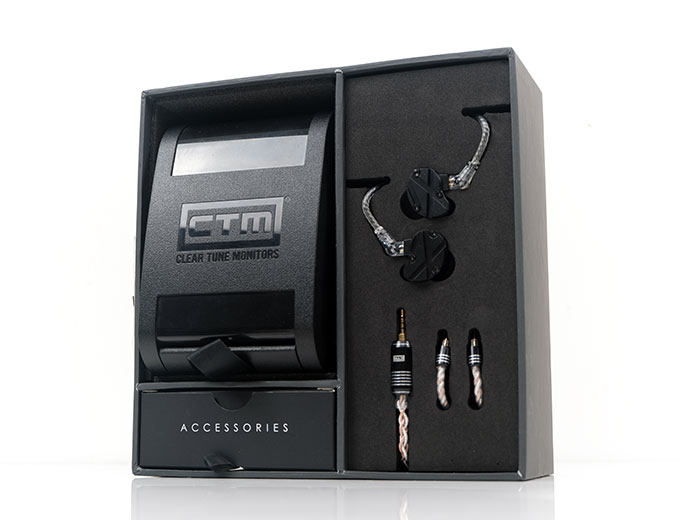CTM Da Vinci IX Sound Impressions
Summary
CTM had been clever with the IX tuning. There is a difference of course from the X with that additional driver for the highs. However, rather than make a “B minus” X version with one less driver or they instead went for a tuning that is colored more for an emotional response, a toe-tapping “fun” orientated presentation.
That is not the clever part though. The clever part, at least when comparing the IX to other smoother sounding competitors, is just how balanced and detailed the IX is. Sure, when you compare it to the X it is going to sound perhaps a bit smoother, less detail orientated but compared to the Earsonics Grace and a few others which have one more driver? I went with the IX every time.
The IX is such that you get the expected u-shaped musical presentation with bumps in the mid-bass and a good vocal presence that are the hallmarks of a PRaT orientated tuning. But you also get a nice timbral balance between low-end warmth and cooler treble presence that makes every note the IX conjures up sound far more natural sounding than some of the competition.
The glib commentary for the IX is likely to focus on the more casual, forgiving nature of the tuning. However, as far as I am concerned, the IX’s coloration is every bit as accomplished and the perfect foil to the X’s reference sound.
Staging
The IX staging is strong on depth, excellent width, and a little more relaxed in terms of top-end forwardness and airiness. It has a forward sub-to-mid-bass response, a definite elevated vocal presence, and good upper mids-lower treble focus. It will sound a little more intimate than the X as a result but within that staging envelope, the imaging and level of instrumental separation are excellent.
That last statement is particularly pleasing because my initial expectation was the IX could sound a little more veiled or vague in its mids staging and imaging with that greater emphasis on the low-end and pushed vocal presence but it seems not the case.
For instance, Lark Studio’s 10-driver LSXC sounds fairly center-focused with a big skew to vocals to the point where instrumental imaging is lacking a lot of width. Not so with the IX. It still retains an impressive holographic element to its midrange staging despite the obviously enhanced level of low-end warmth. Not to something like the 64 Audio A18T level, more a natural live feel to its soundstage.
Height on the IX is not as airy or extended sounding as the X with the one less driver and there is a little more focus on the lower treble to ensure percussion has snap and presence. It will, however, give you a perception of nice detail and it does help to deliver a strong counter to the enhanced bass presence.
Bass
Elevated but not overly so. My initial impression of the IX low-end was of a large dose of sub-bass and mid-bass in equal amounts but after some longer listening and comparison with the likes of the Earsonics Grace, I find it a bit more nuanced in its tuning and not that extreme.
In a way, it reminds me of Campfire’s Andromeda low-end tuning with a tasteful lift to the sub-bass and a fairly linear extension into the mid-bass around 80Hz – 100Hz for some warmth and body. As a result, the IX delivers a low-end that is punchy and full-bodied but nothing soft or lacking in definition.
There is a definite turn of pace as you would expect from a BA driver build and its definitely tighter and more defined sounding for me than the softer but thicker bass presentation of the Grace and LSXC from Lark Studio.
Mids
There is also a slight dip into the lower-mids from around 200Hz to 700-800hZ that helps prevent unnecessary bass bleed so you will not find the IX sounding muddy or suffering from upper-bass bloom on any lower-pitch instrumental notes such as bass and rhythm guitar. There is some good separation here and a timbral balance that is very natural to my ears.
I absolutely love the voicing on the midrange on the IX. It is rich-sounding, smooth, and slightly forward. You can argue it is more euphonic sounding than the X but it is not soft or romantic in its delivery.
You will find less occasion for sibilance than the X which is a little less forgiving. However, that little bit of lower treble forwardness in the IX means it never sounds dull to my ears with impressive vocal clarity and instrumental plucks that does not sound overly rounded or lush.
Treble
The IX treble is a little on the relaxed and closer side compared to the X. However, what CTM has done is pushed the upper mids and lower treble just a little further forward with a slight nudge in the upper treble to help deliver a very even sound and a great harmonic balance.
Like the low-end IX tuning, the treble is more tasteful than strident. Whilst not as airy or as extended as the X there is enough presence and perception of detail to give higher-pitched instrumental timbre a satisfying weight and natural tone.
Matchability
The impedance and SPL of the IX are slightly different from the X. The IX is rated at 46.8 Ω and 118dB SPL compared to the Da Vinci X which is rated at 43.8Ω and 117.2dB SPL. In real life, that is hardly a discernible gap and in our testing, you will not really hear any volume difference between the two monitors.
We ran it balanced and unbalanced in the iBasso DX220 and Lotoo’s PAW Gold Touch in the X review and both volume-matched perfectly. In our subsequent testing for this review with the newly arrived Cayin N6ii, nothing really changed my mind on my original findings.
Both showed the exact same response to sources with higher noise floors such as the FiiO X5iii with just a margin of light hiss in both balanced and unbalanced outputs. Both monitors have a perfectly black background on the Lotoo, iBasso and the Cayin N6ii DAPs in either balanced or unbalanced mode.
In their own right, I would say the IX is fairly sensitive but not as super-efficient compared to the Campfire Audio, Vision Ears or Empire Ears models.
Synergy
DSP
I like to use a bit of PMEQ or MSEB (HiBy and the Cayin N6ii DSP) on the IX in much the same way as I did with the X. The IX does respond well to tweaks if you need some more treble energy or want to tone down the level of bass warmth. A little focused PMEQ peaking on the PAW Gold Touch by around 2-3dB around 8k on the IX teased out a little more vividness from higher-pitched vocals and percussion snap without additional sibilance creeping in.
Filters
To be honest the filters on the IX are not game-changing and have less of an influence on the final signature as they did on the X. Still, there are some differences and preferences in the use of the filters, especially when combined with tips and sources.
I would personally avoid using the red “bass” filter with the IX as it delivers a level of softness that takes something away from the IX’s magic, especially if you use it with foam tips it just sounds a little sluggish. Also, refrain from using this filter with warm sources, or warm on the low-end like the Sony 1Z. You get a double helping of softness here.
I gravitated more to the reference and blue (treble) filters when using foam tips and the reference filter with the silicone tips on the IX. Even with neutral sources such as the iBasso DX220 they sounded pretty evenly balanced and not too lean or hot. The low-end did lose a tiny bit of body on the blue filter compared to the reference
Tips
CTM’s included filters combined with silicone and foam tips do help to fine-tune the presentation to match the source you want to use with it.
The silicone tips are far more useful with the IX than with the X and quite often I find myself using them over the foam alternatives. The silicone tips deliver a slightly flatter bass, less warmth, and a bit more openness. The foam tips will thicken the sound a bit more and soften the treble which may not suit warm sources though I did find them to be a nice pairing with neutral to bright DAPs such as the Lotoo PAW Gold Touch.
Select Comparisons
Clear Tune Monitors Da Vinci X
$2400
Technical
The Da Vinci X is the bigger sibling of the IX, using 10, instead of 9 balanced armature drivers and is priced a little more at $2400. The precise configuration is 4 for the lows, 4 for the mids, and 2 for the highs with a 5-way crossover. The X has that additional BA driver for the highs and uses a more complex 5-way crossover. Both are using W.I.S.E. tech in their internal builds.
Externally the core design and finish are almost the exact same between these two monitors. The only key difference is the front faceplate of the IX not having a chrome paint finish and of course showing IX instead of X. It is a little more understated looking but I like it.
The other difference is the weight. The X feels a little heavier or denser in the hand. You can also feel that in the ear though both have the same levels of seal. The IX is just the marginally more comfortable of the two in the ear due to the weight difference but it is a marginal gap.
The IX also comes with that nice Juba premium SPC 4-wire cable as well as the stock black-finished 50″ OFC cable that is inside the X box. All other accessories included are the same in both the X and IX retail boxes.
Tuning
IX is a more euphonic sounding monitor than the neutral X. It delivers a little more low-end body and warmth but not as much as the Grace or LSXC. The X sounds comparatively neutral on the low-end but also a little tighter.
Mids are slightly further forward sounding on the IX, especially vocals, and they have a little more richness and even-harmonic bias to them than the cooler X.
With one less driver for the top end, CTM has opted for a more relaxed treble presentation. It is not as airy, clear, or forward in its tuning compared to the X so percussion lacks a little bite and presence.
That relaxed tuning does influence the overall timbre of the IX. Combined with the low-end warmth you get a very forgiving sibilant-free sound. A sound I quite enjoyed at CanJam when I first heard it and one that I find more on the fun side of things.
Earsonics Grace
$2000
Technical
The Earsonics Grace is a 10 balanced armature driver universal IEM priced at €2000 which is a little more than the price of the Da Vinci IX.
The configuration for the Grace is two full range vented drivers for the low-end, four smaller midrange BA drivers for the mids, and four BA drivers for the highs. The IX differs here with a 4-way crossover consisting of 4 for the lows, 4 for the mids, and 1 for the highs.
Whilst both come in a monotone black finish for the shell and motifs on the front plates, the Grace is much lighter due to its all acrylic build compared to the sturdier but heavier IX. It is also the smaller of the two monitors and is a little more comfortable in the ear. The IX isolates better, particularly with the foam tips. The IX’s wider nozzle goes more for a little pressure build-up in the ear canal to get that seal.
Cables are much better with the Da Vinci IX with even the stock cable looking stronger than the stock alternative that comes with the Grace. The Juba premium 4-wire is also a significant step-up in build quality and sonic performance.
Performance
The Grace is rated at 26.6Ω and 119dB SPL compared to the Da Vinci’s IX’s 46.8Ω and 118dB. Despite the lower impedance and higher SPL of the Grace, we did find the Da Vinci IX to be the easier monitor to drive in unbalanced and balanced modes with DAPs tried, including the new Cayin N6ii.
However, the Grace seems to be less sensitive to higher noise floors and was fairly quiet on the likes of the FiiO X5iii DAP which is known to show some hiss, especially in balanced output. The IX, like the X in our previous review, did give us a little hiss but not Andromeda levels of noise.
If you fancy pairing either of these to the likes of the DX220 then good news, you will get a black background, zero hiss in both balanced and unbalanced modes, and plenty of room for volume control in low gain.
Tuning
Whilst both monitors are aiming for that same smooth and musical signature the IX seems to have the better harmonic balance of the two for instrumental timbre and voicing. The Grace has slightly more body in its sub-bass presence and delivery but even so, right up to around 300-400Hz it sounds a bit soft and lacking in pace and definition compared to the IX’s snappier and slightly cleaner low-end.
Still, the IX is fairly full-bodied in its own right but the significantly better upper mids and lower-treble presence infuse the instrumental timbre with a bit more crispness that that mids of the Earsonics does not offer. Male vocals sound a little further back on the Grace compared to the IX and also lack a little bit of body.
I also found the IX to have a lot more instrumental presence and snap to it as well as lower-mids guitar work. Again, it goes back to that better harmonic balance I was talking about in the first paragraph. Both are relatively even-harmonic in tone, but the Grace just has a bit more to it so anything below 4k sounds fairly rounded to my ears.
Treble is on the IX is a little more forward to my ear with the better body though, to be honest, both cut a fairly relaxed top-end presentation. Rather, the upper mids and lower-treble on the IX has more presence and power but still sounds quite natural. The Grace is a little further back with some peaking in similar areas but overall slightly less amplitude so it is a touch less bite, especially in the upper mids and percussion timbre.
Lark Studio LSXC
$1699
Technical
The LSXC is a 10 balanced armature driver monitor and the flagship monitor for Lark Studio. The precise configuration is 3 for the lows, 4 for the mids, 2 for the highs, and 1 for the super-highs using a passive 4-way crossover design. The IX configuration is a 4-way crossover consisting of 4 for the lows, 4 for the mids, and 1 for the highs.
You can get the LSXC in either universal (LSX) or custom design and the starting price is a little cheaper at $1699. All designs offered are at no additional cost from Lark Studio which is a very nice bonus because they do some great designs.
They have an LSXC Splendor option at $1899 which I highly recommend for the added PWAudio Saladin cable bundled with it. It is a big upgrade on the stock cable performance and a better performer than the CTM Juba which comes with the Da Vinci IX.
Performance
The LSXC is rated at 20Ω and 110dB SPL compared to the Da Vinci IX which is rated at 46.8Ω and 118dB SPL. In terms of volume matching from our testing from a multitude of sources, there is only a tiny gap for volume on sources such as the Lotoo PAW Gold and the Cayin N6ii in balanced and unbalanced output formats.
What we did notice though was the IX was more sensitive to the higher noise floors than the LSXC. As before with the X on the FiiO X5iii, we felt the IX was slightly north of efficient. We could definitely detect a bit more hiss when the volume was turned down on the IX in balanced mode. Both monitors have a nice black background on the Lotoo PAW Gold and the iBasso DX220.
Tuning
Like the IX, the LSXC is shooting for something smooth, musical, and forgiving in tone. However, they go about this in slightly different ways. The first thing you will notice is the timbral balance. There is a bit more treble presence and energy with the IX as well as a fairly marked 3-4k dip in the LSXC. As a result, the IX harmonic balance on instrumental notes sounds the cleaner of the two.
The LSXC shoots for euphoric with more even-harmonic overtones so overall it sounds softer with slightly less bite and delivering a fairly muted upper-mids performance that tends to suck the air out of vocal presence a little more by comparison.
The interesting thing is that the LSXC has more of a 1-3k hump to my ears than the IX. Vocals are “bigger and richer” sounding on the LSXC and certainly better than the Grace. However, the IX vocals have a little more clarity and overall the more engaging signature. Again, it is back to the timbral balance and the warmer softer sound of the LSXC leaving me just slightly disengaged.
The LSXC does have more body and sub-bass presence than the IX but just a little vaguer in its delivery and not as tight sounding. That warmth does travel further so instrumental presence is a little richer and more euphonic than the IX lower-mids delivery.
Our Verdict
The IX is the perfect complement to the clean detailed delivery of the X. This is a tastefully tuned smoother, more full-bodied sound. There is more emphasis on bass weight, a richer and closer sounding vocal delivery, and a relaxed more forgiving top-end.
There is also enough awareness in the tuning though to still sound detailed, tight, and with above-average imaging and instrumental tuning. This is not a soft “squidgy’ sounding monitor by any means and even at this price point, the typical audiophile is going to hear a very nicely balanced presentation.
If you need the additional extension, even greater separation, and a cleaner sound then the X has the technical chops and I can understand why it’s positioned slightly above the X. However, I still have a soft spot for the IX tuning, it is just so easy to get along with for the majority of my own musical preferences.
Da Vinci IX Specifications
- Input Sensitivity 118dB @ 1kHz
- Freq Response 20 Hz to 20 kHz
- Speaker Single Armature Balanced
- Impedance 46.8 Ω @ 1 kHz
- THD 0.43% @1kHz
- Noise Isolation -26dB
- Input Connector 1/8″ (3.5mm)


